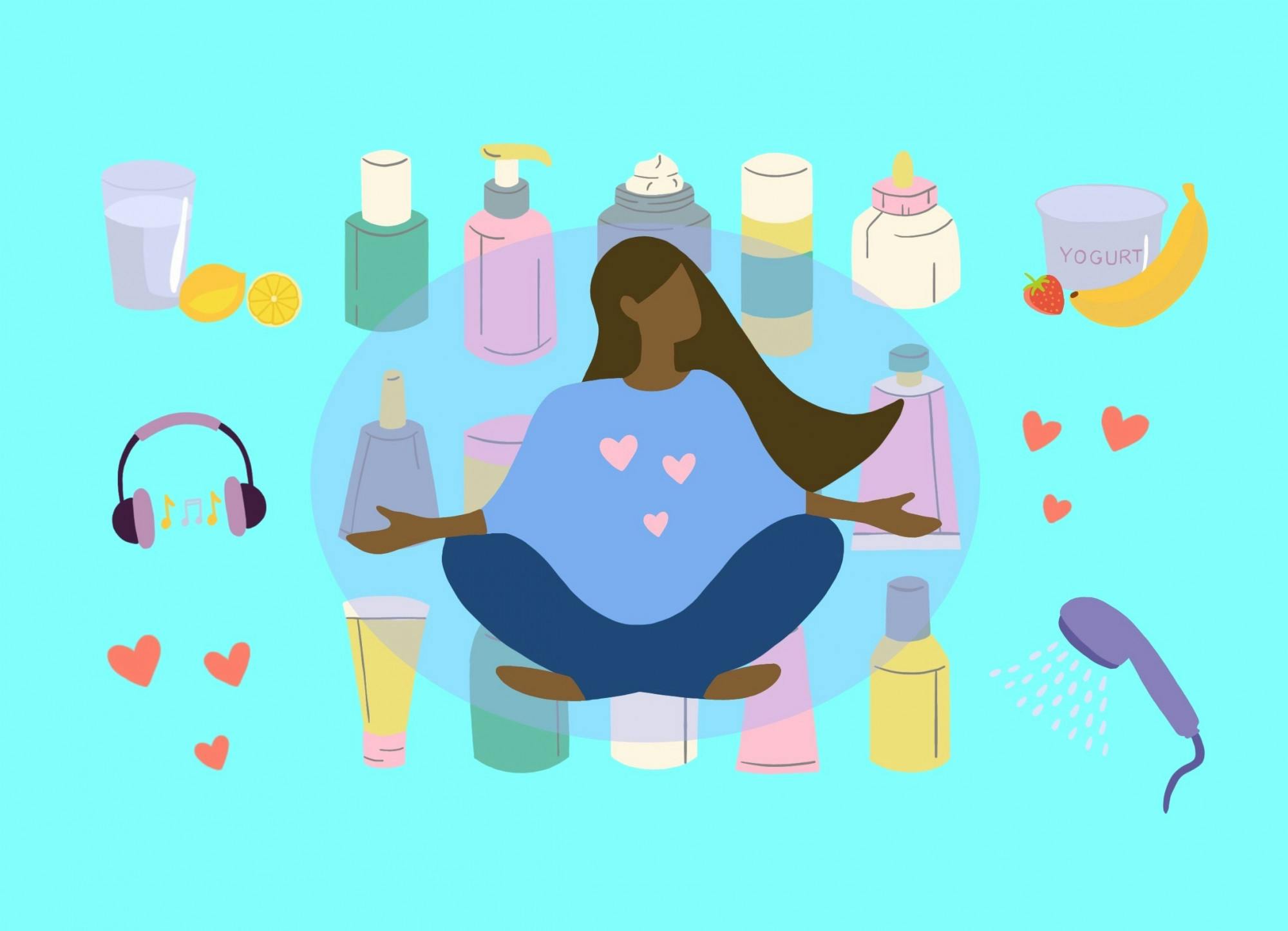If you’re a young woman on social media, you’ve likely been exposed to the newest trend: being a 'clean girl'.
The ‘clean girl’ is an off-duty model; she is effortlessly beautiful. Her hair is slicked back into a ponytail held back with olaplex oil. Her skin is glowing because she’s lathered in Vaseline. The color palette of her pictures is white and bright and blinding. Her bathroom counter is home to an array of luxurious oils and serums, but other than that, there’s not a single item on literally any surface. Her TikTok feed is video after video of her making her bed, washing her face and lighting a bedside candle in a face mask.
Somewhere along the way we’ve decided to ditch the full-face makeup and high heels beauty standard and we replaced it with one that’s more fresh and natural. This standard promotes self-care. This standard is all about being kind to ourselves.
But perhaps the dangerous thing about this borderline unattainable beauty standard is that it’s packaged and sold to us as a lifestyle that is completely and utterly accessible, if only we own the right products.
Genomics and molecular genetics sophomore Bhavya Thotakura said that recent social media trends have changed the kinds of products that she buys.
“There's a new product innovation with results that everyone's talking about, almost every other day,” Thotakura said. “I'm always on TikTok, and there's always some random new product that looks so good and you're like, ‘I need to try this’.”
Consumer behavior expert and MSU marketing professor Ayalla Ruvio said that college-aged people’s exposure to advertisements is unparalleled. Every third video on TikTok is a clothing or skincare ad. Every influencer that you follow on instagram is posting her haircare haul. Every YouTuber is showing you their daily makeup routine with luxurious products (that they have a coupon for, if you click the link in the description).
Journalism junior Gabby Nelson said that our current understanding of self-care materializes women’s beauty and exacerbates beauty standards.
Beauty standards for women can be a lot of things: hair color, hair length, height, bra size, waist measurements, eye color, complexion, the list goes on. But one thing they are are not is discriminatory on the basis of age.
Ruvio noted that middle-aged women are subject to perhaps even harsher advertisements for beauty products, especially as it pertains to anti-aging. She referred to this as a double standard that we haven’t had much success in changing: men get better with age, but women should avoid displaying physical signs of aging at all costs (literally).
“We all have the desire to look the best we can, right?” Ruvio said. “So any product that enhances how we look in the way that we like it will be appealing to us.”
Thotakura admits that she owns a lot of tools and products that she uses mostly just for the sake of using them.
“Sometimes you don't even know if the products work,” Thotakura said. “It’s just the fact that you're doing it, it makes you feel good. So it's all about the feeling.”
Ruvio described this as the ‘hedonic value’ of a product: pleasure derived from consuming or using the object. The pleasure doesn’t come from the utility of the product, but rather the experience of using it and the feeling it gives us.
“Research shows that consumers that were purchasing … wearing … or having in their possession some kind of high end item, perform better in interviews or in tests,” Ruvio said. “It boosts our confidence. It makes us feel better.”
Thotakura said that she’s tried to limit her purchases to brands that she trusts.
But what makes a brand “trustworthy”? Consumer loyalty expert and MSU retailing professor Patricia Huddleston said that we often think of a brand as a relationship that we have, especially if its products have performed the way we want them to.
“When you buy products,” Huddleston said. “You don't necessarily think about the brand profiting from your purchase.”
Once we have personified a company, turned something that exists to reap a profit from us into something worthy of our loyalty, are we capable of being anything more than crazed consumers?
Ruvio said that ‘smart consumers’ are better with their purchases and the ability to control their impulses. Smart consumers are able to escape the cycle of buying items, deriving all of the pleasure from it and becoming bored with it soon after.
Support student media!
Please consider donating to The State News and help fund the future of journalism.
But in order to escape this, Ruvio said that we have to ask ourselves questions like, “Do I really need this?”
When it comes to practicing self-care, the answer is often no. Self-care doesn’t always look so aesthetically-pleasing, nor is it a pleasure only afforded to those privileged enough to pay for it.
“I think it's important for women to acknowledge that you don't have to have a bunch of money and buy all the beauty products to engage in self-care,” said Nelson.
Thotakura said that self-care is different for everybody and what's considered ‘beautiful’ or ‘healthy’ might vary for people.
“I think self care to me is kind of just listening to your body,” Thotakura said. “If I need mental help or if I need a physical relaxation or just a break, it depends on what my body is asking for.”
For Nelson, self-care is making the time to prioritize herself. It can be taking a bath, meditating or doing yoga; all things that don’t require an element of materialism.
With smarter consumerism, perhaps self-care could become more of a practice that everyone is capable of partaking in, and less of an aesthetic that comes with a price tag.
Discussion
Share and discuss “When self-care creates careless consumerism ” on social media.







